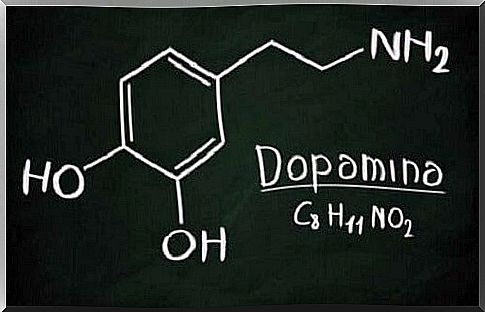Are We Talking About Attachment Instead Of Addiction?

One hundred years ago, drugs were first banned. In this century of the “war on drugs,” countless professors and governors have told people stories of addiction. They have become so ingrained in our minds that we believe they are true. But shouldn’t we speak of attachment rather than addiction?
However, the American Chemical Society has changed the rules of the game. They say that an addiction to drugs, alcohol or any other destructive substance is not the result of some “personal flaw.” Actually, this is the natural result of brain chemistry. It looks like an attachment.
Multiple experiments have shown that the need for dopamine is what leads to addiction. This is the neurotransmitter involved in a person’s “happiness” (Newcombe, 2016).
Drugs pass through a part of the brain called the ventral tegmental area. This part of the brain is better known as the “reward center.” This is where your brain processes anything that makes you feel good. It is also where the brain produces dopamine. According to The Washington Post , this is the chemical that gives you pleasure.
For example, someone becomes addicted to cocaine because he has found nothing else to get addicted to. In other words, this means that sobriety is not the opposite of addiction. It is a human connection.

The key is understanding why we act a certain way
Resources in and of themselves don’t necessarily make you feel good. It’s the signals they send to your brain and body that do this. Some drugs can raise dopamine levels up to ten times the normal level.
What does your brain do to adapt to excess dopamine? They reduce the number of receptors that this particular chemical has. An addict will therefore need more and more of a certain drug over time to feel good.
British author Johann Hari has also collected some evidence about “people living in happy environments.” These people actually get the right amount of dopamine in their daily lives. According to his evidence, they are less likely to develop a drug addiction (Swanson, 2015).
Attachment instead of addiction: it’s a human connection
Hari also quoted Bruce Alexander, a psychology professor from Vancouver, Canada. He states that “addiction is an adaptation to your environment and a kind of cage” (Alexander, 2010).
In one of his experiments, he discovered something very strange. The rats he studied that drank water mixed with cocaine until they died were always alone in their cages. They had nothing to do except take the drugs. So he wondered what would happen if he tried to change their environment.
The Rat Park Experiment
This led Alexander to create the “Rat Park”. In fact this was a nice cage where the rats had access to colorful balls, high quality food, tunnels to run around in and lots of rats to interact with. It was everything a rat could ever wish for and even more.
In the cage Alexander then put two bottles of water from which they could drink. One bottle was mixed with cocaine, the other was not. All rats started drinking from both bottles.
However, he found that all the rats that had a good life in the park did not like the water with the drugs. In general, they avoided drinking from it. They drank up to a quarter less of the water with the drugs than the isolated rats. Not one of those rats died. On the other hand, the lonely, unhappy rats became addicted.
So the happy rats did not develop an addiction to drugs. That was because they had healthier attachments to their environment. The unfortunate rats had to build an attachment to the drugs in order to find positive stimuli.
The Experiment Applied to Humans: Is Attachment Rather Than Addiction?
At first, Alexander believed that this may have been typical for rats. However, he then discovered that a similar experiment had also been conducted in humans: the Vietnam War.
Time magazine said heroin use among US soldiers was “as common as chewing gum.” According to the Archives of General Psychiatry , about 20% of US soldiers there developed a heroin addiction.

That same study also stated that nearly 95% of all addicted soldiers managed to quit. Few of them had to undergo a withdrawal program. From a terrible cage (Vietnam) they went to welcoming and warm places (their home). There they no longer wanted to use drugs.
Alexander argued that this discovery was an important achievement. He said it went against the conservative idea that addiction is an act of selfishness and the liberal idea that addiction is actually a chemical hostage-taking of the brain.
According to him, addiction, on the other hand, was an adaptation. Perhaps the problem is not the addiction itself but a lack of attachment and the need to cling to something else instead.









